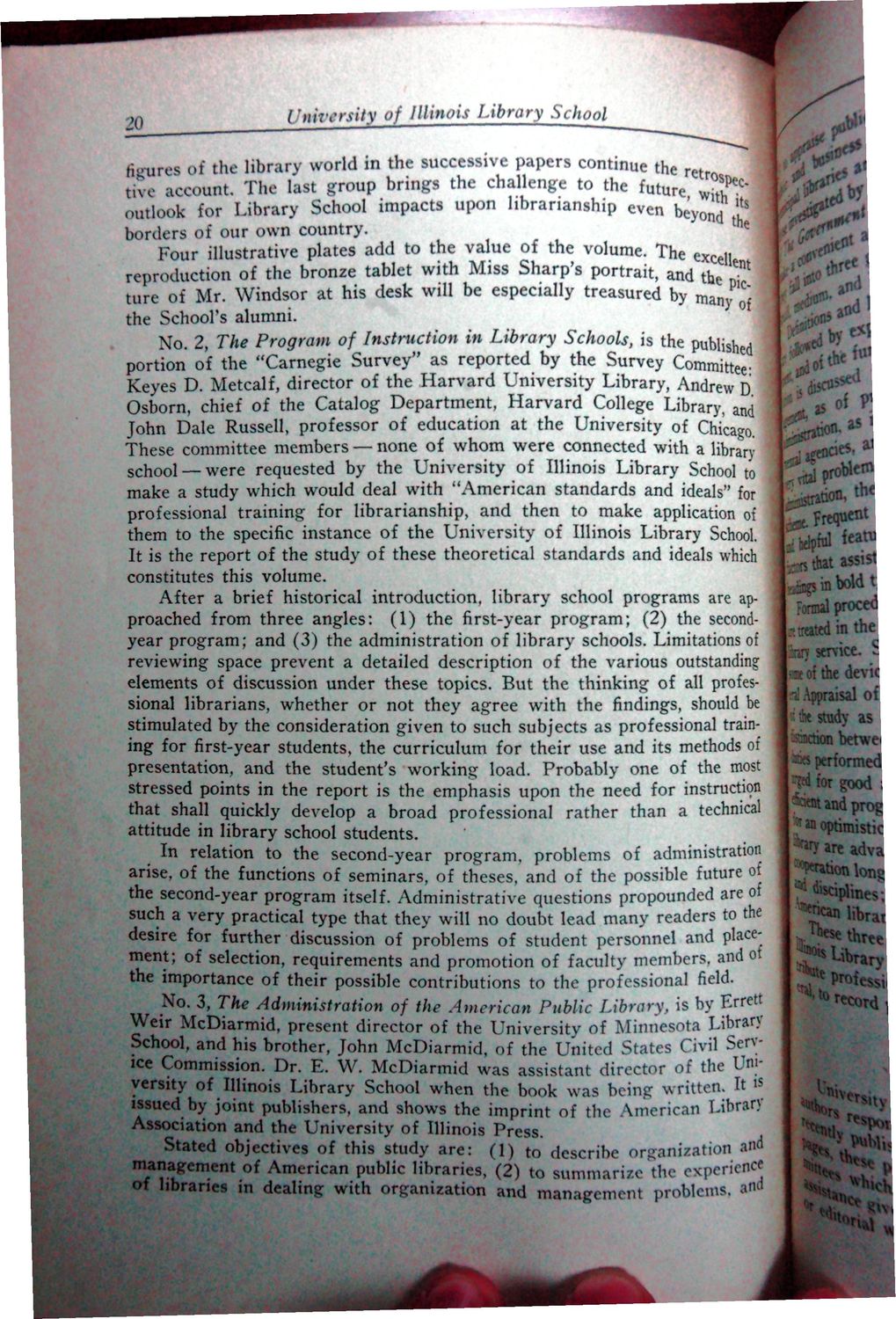| |
| |
Caption: UI Library School Alumni Newsletter - 34
This is a reduced-resolution page image for fast online browsing.

EXTRACTED TEXT FROM PAGE:
University of Illinois Library School figures of the library world in the successive papers continue the retm* rive account. The last group brings the challenge to the futurc *«*outlook for Library School impacts upon hbrananship even beyond th he borders of our own country. Four illustrative plates add to the value of the volume. The excel! reproduction of the bronze tablet with Miss Sharp's portrait, and the T ture of Mr. Windsor at his desk will be especially treasured by many Jj the School's alumni. No. 2, The Program of Instruction in Library Schools, is the published I portion of the "Carnegie Survey" as reported by the Survey Committee- I *eJ Keyes D. Metcalf, director of the Harvard University Library, Andrew D j Osborn, chief of the Catalog Department, Harvard College Library, and John Dale Russell, professor of education at the University of Chicago, j These committee members — none of whom were connected with a library j school —were requested by the University of Illinois Library School to Trial proW<m make a study which would deal with "American standards and ideals" for the professional training for librarianship, and then to make application of them to the specific instance of the University of Illinois Library School. It is the report of the study of these theoretical standards and ideals which constitutes this volume. afogs in bold v After a brief historical introduction, library school programs are apFormal proced proached from three angles: (1) the first-year program; (2) the secondrated in the year program; and (3) the administration of library schools. Limitations of Inry service. reviewing space prevent a detailed description of the various outstanding: JBC of the devic elements of discussion under these topics. But the thinking of all profesId Appraisal of sional librarians, whether or not they agree with the findings, should be 'k study as stimulated by the consideration given to such subjects as professional training for nrst-year students, tne curriculum tor their use ana its methods of • taction betwe< the for and ior first-year memou* oi \ presentation, and the student's working load. Probably one of the most I** performed good stressed points in the report is the emphasis upon the need for instruction j^Ktt and prog that shall quickly develop a broad professional rather than a technical *tooptimistic attitude in library school students. :**y arc adva In relation to the second-year program, problems of administration ^nition long arise, of the functions of seminars, of theses, and of the possible future of the second-year program itself. Administrative questions propounded are of f disciplines; *J«n librar such a very practical type that they will no doubt lead many readers to the desire for further discussion of problems of student personnel and placehrCC Wtb "'* Library ment; of selection, requirements and promotion of faculty members, and of the importance of their possible contributions to the professional field. No. 3, The Administration of the American Public Library, is by Errett 1 Weir McDiarmid, present director of the University of Minnesota Library School, and his brother, John McDiarmid, of the United States Civil Service Commission. Dr. E. W. McDiarmid was assistant director of the UnilS versity of Illinois Library School when the book was being written. It issued by joint publishers, and shows the imprint of the American Library rts , p> Association and the University of Illinois Press. * .Pub, Stated objectives of this study are: (1) to describe organization and management of American public libraries, (2) to summarize the experieflC* V of libraries in dealing with organization and management problems, ami sg ; ' -
| |